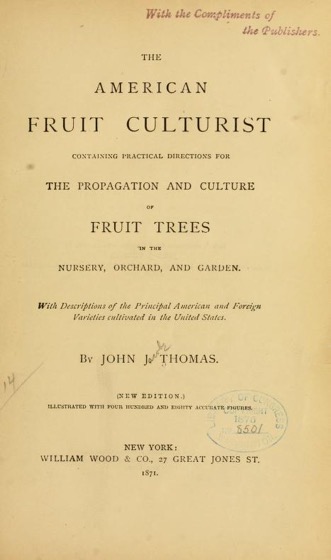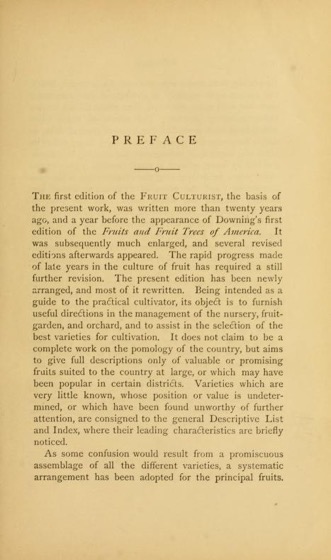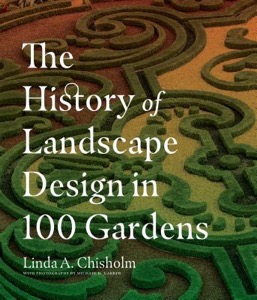Historical Garden Books – 118 in a series – The American fruit culturist (1871)
Download in Text, PDF, Single Page JPG, TORRENT from Archive.org
PREFACE
Thk first edition of the Fruit Culturist, the basis of the present work, was written more than twenty years ago, and a year before the appearance of Downing’s first edition of the Fruits and Fruit Trees of America. It was subsequently much enlarged, and several revised editions afterwards appeared. The rapid progress made of late years in the culture of fruit has required a still further revision. The present edition has been newly arranged, and most of it rewritten. Being intended as a guide to the practical cultivator, its object is to furnish useful direcStions in the management of the nursery, fruit-garden, and orchard, and to assist in the selection of the best varieties for cultivation. It does not claim to be a complete work on the pomology of the country, but aims to give full descriptions only of valuable or promising fruits suited to the country at large, or which may have been popular in certain districts. Varieties which are very little known, whose position or value is undetermined, or which have been found unworthy of further attention, are consigned to the general Descriptive List and Index, where their leading characteristics are briefly noticed.
As some confusion would result from a promiscuous assemblage of all the different varieties, a systematic arrangement has been adopted for the principal fruits.
By placing them under separate and characteristic heads, the cultivator is enabled to distinguish and remember each sort with more readiness than where all are thrown indiscriminately together. The names of those fruits which have been proved of tlie greatest general value or which have received a large vote in their favor, either in particular regions, or throughout the country, are distinguished by being printed in small capitals. One of the chief points for determining the classification is the time of ripening; and the principal fruits are separated into summer, autumn, and winter sorts. As the time of ripening, however, varies several weeks in different parts of the country, and no exact line could be drawn for these three divisions, it would be strictly correct to classify them as early, medium, and late. With this understanding, however, the terms used will answer the purpose, and will not mislead.
The limits of the work, and the condensed character of the descriptions, have often forbidden a reference to authorities. A general acknowledgment, however, is due to the works of Charles Downing and P. Barry, of New York; of F. R. Elliott, of Ohio, and Wm. N. White, of Georgia ; and to Hoveys Magazine, the Gardeners Monthly, the Horticultutrist, and Album de Pomologie, for descriptions of new or rare varieties. The author is also specially indebted to Marshall P. Wilder, of Boston, President of the American Pomological Society ; to Charles Downing, of Newburgh ; and to Ellwanger and Barry, of Rochester, for much valuable information received in various ways.
- Publication date 1871
- Topics Fruit-culture
- Publisher New York, W. Wood & co.
- Collection library_of_congress; biodiversity; fedlink
- Digitizing sponsor Sloan Foundation
- Contributor The Library of Congress
- Language English
Find more books on Bookshop and Help Indie Book Stores!
* A portion of each sale from Amazon.com directly supports our blogs
** Many of these books may be available from your local library. Check it out!


